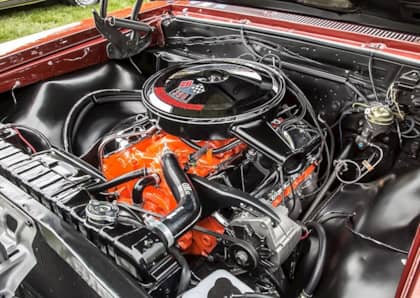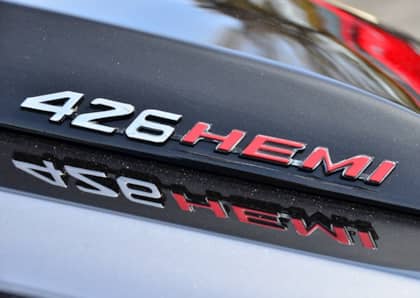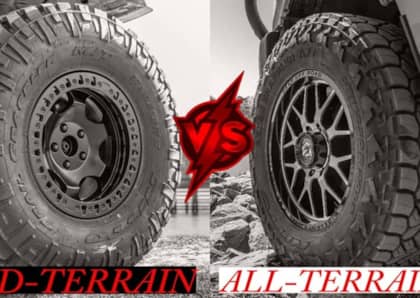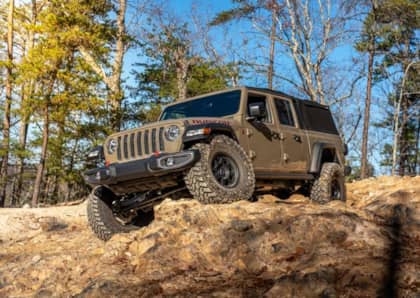A History Of The Ford 427 Big Block V8 That Changed Blue Oval Motorsports Forever
Ford's most famous big block engine of all time had only a modest impact on the street drag wars that dominated the 1960s muscle car scene. Although it hailed from the FE family of engines that modernized the Blue Oval's V8s across most of its line-up, and was available to customers who knew which boxes to check at ordering time, the 427 was destined to perform not so much on Woodward boulevard but rather the race track.

Designed specifically to dominate at the highest levels of NASCAR, NHRA, and even international sports car competition, the Ford 427 V8 became a legend that demonstrated just how advanced the automaker's engineering capabilities were during an era where horsepower was king and brands were seeking even the slightest edge over each other in the 'Win On Sunday, Sell On Monday' mindset.
(Over)Built To Last
The FE series of V8s had gone through no less than six iterations from the day they were introduced in 1958 until the 427 version joined the party in 1963. It took over from the short-lived 406, which had in turn been developed as an offshoot of the longer-lasting 390. Although the engine actually displaced 425 cubic inches, Ford rounded up to 427 to match the limits of the various racing series in which the motor was expected to perform. It also helped when marketing the engine against the big block V8s on offer from GM in vehicles like the Chevrolet Impala and (eventually) the Chevelle.
The iron block engine shared the same 3.78 inch stroke as the 390 in order to facilitate high-revving power, but enlarged its bore to 4.23 inches, with a 12.5:1 compression ratio. It was the details, however, that truly set the 427 apart form other Ford engines of the day. In addition to a high-nickel alloy used in the block for additional strength, the motor featured a thicker cloverleaf cylinder mold, crankshaft cross-bolts for the main bearing caps, main bearing webs, solid lifters, and (starting in 1965) a forged crankshaft.

Early versions of the engine made use of a top-oiling system, but after extensive circle track competition revealed a weakness in keeping the crank bearings protected. Also in 1965 a switch was made to a side-oiler design that sent lubricant to the crank before the valvetrain, solving the issue.

On the street, horsepower started at 425 for versions equipped with dual-quad carburetors, while single-carb motors were rated at 410 hp. Torque for the 427 hovered around 480 lb-ft. NASCAR engines traded up to hi-riser heads with enormous rectangular intake ports that pushed output well past the 500 hp mark when matched with the required intake manifold (with medium-riser heads also on offer as NASCAR attempted to reign in performance by way of rule changes). Drag racers of the day had access to similarly-mighty tuned direct from Ford, and given homologation requirements at the time, everyday buyers could also specify the medium-riser heads on their street 427s.
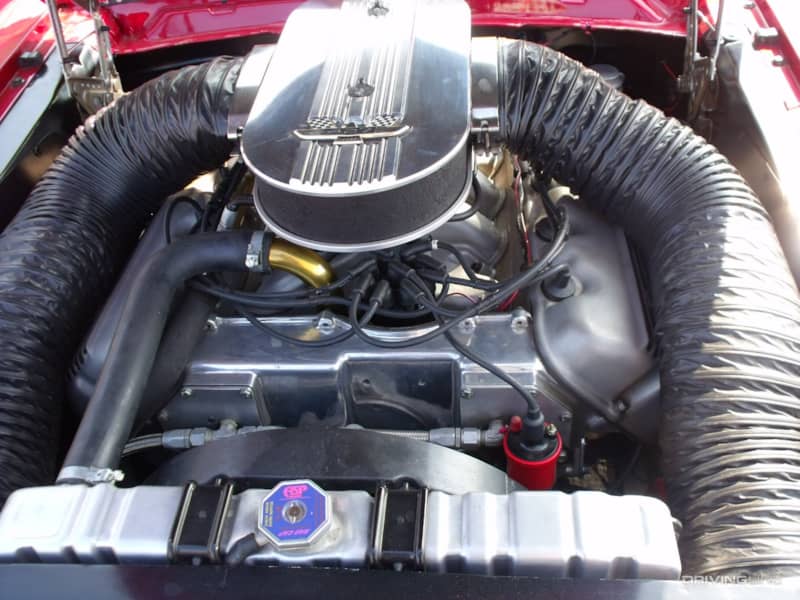
Ford also made an advanced version of the 427 called the 'Cammer.' The engine, which debuted in 1965, married the side-oiler with an exotic single overhead cam design in place of pushrods, driven by an unusual 7-foot roller chain and backed by hemispherical combustion chambers.

Dubbed the '90-day wonder' in reference to the ultra-quick development period that produced the engine, it generated a whopping 616 hp and 515 lb-ft of torque.
Race Ready
NASCAR officials were flummoxed by Ford's Cammer and went to great lengths to ban the engine from the series after concerns about an influx of what it termed 'special racing engines.' A compromise of sorts was eventually reached in 1966, when the governing body decided to allow a restricted version of the 427 Cammer to run in full-size sedans as long as the driver carried enough ballast along with them to boost overall vehicle weight to 4,400 lbs (nearly 430 lbs more than comparable Dodges). Unsurprisingly, no team took the officials up on their offer.

Although it never competed at a circle track, Ford made sure its stock of Cammer parts made it into the hands of its NHRA faithful, resulting in wild builds that pushed as much as 2,500 hp out of the motors in Funny Cars (a figure that unfortunately the factory blocks simply couldn't handle for any length of time.) Ford stepped back from officially supporting the Cammer by the middle of the decade, but a number of drag racers such as Pete Robinson and Connie Kalitta would see major success with the motor until the beginning of the 1970s.

The standard 427 had an even greater racing career. The side-oiler in particular came to dominate sports car competition (winning at Le Mans in the Ford GT40 in 1966), and it was also a force to be reckoned with in NASCAR as well as NHRA, where it served as the power plant in the Ford Fairlane Thunderbolt drag specials built in 1964.

Of course, dozens of amateur and professional racers also campaigned the side-oiler 427 versions of the Shelby Cobra.
Seldom Seen On The Street
On the street, however, the 427 enjoyed a more modest career. In addition to being available in the Cobra, it was largely limited to large, full-size cars like the Ford Galaxie and the Mercury Marauder, where it provided excellent power but was countered by the additional weight and plus-size proportions of those vehicles. Eventually, the 427 would briefly become available in smaller fare like the automatic-only, 390 hp Mercury Cougar GT-E (1968) and the R-code version of the Ford Fairlane 500 (1966-67), where it produced between 410 and 425 hp.

What kept the 427 from enjoying more success in showrooms? The side oiler was more expensive to build and added significant cost to the window sticker of any car it was installed in, which served to keep buyers away. With the advent of the 428 Cobra Jet FE engine and the 385-series 429 Cobra Jet, it was easier and cheaper for Ford to move on to these new designs without sacrificing any horsepower or torque. Despite this, the massive racing success of the 427, the technical acumen of the Cammer, and the FE engine's presence powering the GT40, the Cobra, and the Thunderbolt have guaranteed its place in American big block engine history.





